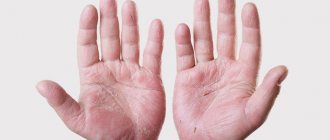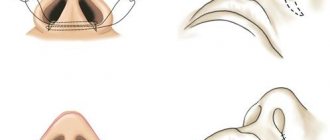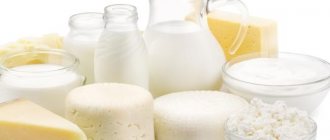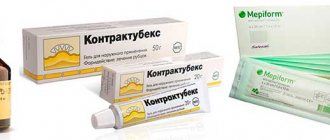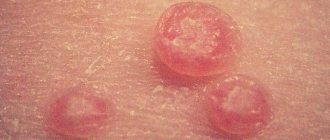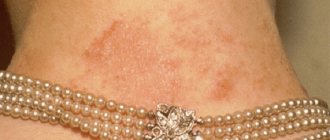Why is breast skin dry?
The situations in which the skin of the mammary gland dries out and peels off are quite diverse. These include both completely physiological and not requiring concern, and quite serious ones. And in order to understand the true reason for what is happening, it is best to consult with a specialist.
Common peeling factors
Dryness and flaking of the skin signals the unfavorable conditions in which it finds itself. And we are not talking about skin type, as such - there should be no such changes on the chest. It is necessary to look for the reason why the epithelium lacks moisture and becomes irritated. And most often common factors take part in this:
- Climatic (hot and dry air, excessive insolation).
- Environmental (dust, pollution and gas contamination of the atmosphere).
- Hygienic (clothing made from synthetic fabrics, incorrectly selected bra, frequent use of soap, inappropriate cosmetics).
- Food (insufficient amount of fluid in the diet, abuse of alcohol, salty foods).
- Medical (vitaminosis, kidney and liver pathology, systemic allergic reactions).
Changes in the breast and nipple area often accompany periodic hormonal changes observed during menstruation. Some women experience a feeling of dryness and tightness before menstruation, and others during ovulation, but this does not go beyond the physiological norm.
When breast skin suffers from dryness, it is first necessary to rule out common causes, and then conduct a more in-depth examination.
During pregnancy and lactation
When carrying a child, the body undergoes a significant restructuring of functional systems, which cannot but affect the condition of the skin and breasts. Even at the beginning of pregnancy, a woman may experience itching and dryness, which indicates metabolic changes. And with the onset of the third trimester, under the influence of hormones, the mammary glands begin to enlarge, which stretches the epithelium.
After the birth of a child, when lactation is just establishing, the nipples are subject to increased stress. The baby sucks intensively, but only colostrum comes out of the breast. And if we add to this the incorrect application, then minor injuries to the epithelium are practically guaranteed. Cracked nipples may well heal with a feeling of dryness and flaking.
Pathology of the mammary gland
The greatest concerns arise in situations where the presence of diseases affecting the skin of the breast or the mammary gland itself is suspected. The appearance of flaky spots, dryness, roughness or other symptoms of a similar nature should be grounds for excluding the following conditions:
- Contact dermatitis.
- Neurodermatitis.
- Psoriasis.
- Follicular hyperkeratosis.
- Oncological processes.
And if skin diseases affecting the breast do not pose a serious danger, then if a malignant tumor is suspected, you must be extremely careful. It is better to double-check the diagnosis by undergoing an in-depth examination.
Pathological processes require careful differential diagnosis and clarification so as not to miss dangerous conditions.
What to do
If, in addition to irritation and dry nipples, a woman is not bothered by other manifestations (pain, redness, red or green discharge), then all that can be done is to prevent the formation of cracks. Microcracks form in any case if the nipple constantly dries out. Therefore, to prevent painful treatment of a sore on the nipple, it is worth constant moisturizing.
If the gynecologist doubts the diagnosis, additional diagnostics may be prescribed in the form of ultrasound of the mammary glands and tests. There is no need to worry about this. Most likely, the doctor is playing it safe in order to exclude possible complications in the future. After all, pregnancy in this case acts as a risk factor in which the release of hormones occurs constantly, which means the risk of the formation of cysts and fibroids increases.
Important!
Oncology during pregnancy is diagnosed quite rarely, in only 3%. However, in all cases, this is preceded by precursors: increased temperature, discharge, retraction of the nipple inward.
What should you pay attention to?
Any processes other than physiological certainly require attention. When faced with a pathology, you cannot wait until it progresses, but consult a doctor in time. And even cosmetic problems can have clear internal reasons, which also require the participation of a specialist.
Skin changes
Skin changes are the first thing people pay attention to during examination. The following can be determined visually:
- Change in color (redness, pallor).
- Rashes (spots, papules, pustules, blisters).
- Erosions and ulcerative defects.
- Peeling, crusts, etc.
When the skin of the breast is rough and dry, this will be clearly determined by palpation, as well as whether there is a thickening or elevation in a certain area. The consistency of space-occupying formations, their localization, boundaries and sizes, mobility and adhesion to the skin, local temperature and pain - all this is also determined by palpation. Signs of a malignant process include:
- Breast deformation.
- Wrinkled and retracted skin (“lemon peel”).
- Knot of rocky density.
- Swelling of the entire gland.
If such changes affect one breast, progress gradually and are not accompanied by pain (in the early stages), then there is every reason to suspect breast cancer.
Papilla and areola
In situations where the nipples itch and peel, pay attention to their appearance (shape, color), the presence of plaque or other defects, while simultaneously examining the areola. You should find out what sensations a woman experiences in the areas being examined (burning, pain, pulsation) and what causes their development.
By palpating the nipples, they determine whether there is discharge from them and what their nature is (serous, bloody, purulent). During lactation and in the last stages of pregnancy, it is useful to find out whether breast milk is secreted well.
Additional symptoms
In addition to local signs, determined visually and by touch in the area of the problem gland, other symptoms are also important for the diagnostician. At the appointment, the doctor finds out whether your general health is disturbed (fever, malaise, lack of appetite), determines the size of the lymph nodes in the armpits, examines the second breast and pays attention to the skin as a whole (rashes, color, dryness). Every nuance can be important for making a diagnosis.
The doctor will be able to give an affirmative answer regarding the cause of dryness and flaking only after a comprehensive diagnosis.
Causes of peeling nipples in women
The problem is common among women of any age. There are many reasons for this. Some symptoms are the first signs of a serious illness. Only a gynecologist and mammologist can make an accurate diagnosis.
Causes of dry skin on the chest
Skin can become dry for several reasons:
- Pregnancy and breastfeeding. A child suckling at the breast often damages the papilla, leaving injuries and wounds on the chest.
- Allergic reaction. Irritated skin itches and peels.
- Lack of fluid in the body. It is necessary to drink enough fluid.
- Avitaminosis. Hair, nails, skin and the nipple area on the chest suffer from a lack of vitamins. The person feels tired and activity decreases.
- Breasts increasing in size. It is observed in a pregnant woman and before menstruation. A teenager during puberty and when treated with hormonal medications also experiences these unpleasant symptoms.
- Poor nutrition. Consumption of alcohol, smoked, spicy and sweet foods causes the accumulation of toxins and waste in the body. At the same time, the skin of the chest tightens, becomes dry, begins to peel and itch.
Peeling nipples as a symptom of the disease
Dry skin on the chest sometimes indicates the appearance of pathology. Skin diseases and even the development of oncology are possible.
- Eczema of a dermatological nature. The disease is characterized by the appearance of scales at the site of inflammation. Patients complain of burning, rash and itching. Symptoms appear with dermatitis and psoriasis.
- Diabetes. Endocrine disease is accompanied by thirst, sudden weight loss, dry skin and the appearance of purulent wounds in many parts of the body, including the chest.
- Mastitis. The disease occurs during breastfeeding due to stagnation of milk. The mammary gland becomes inflamed, the breasts swell and turn red. The skin dries, and purulent discharge comes along with the milk.
- Thrush. Not everyone knows that this disease affects not only the genitals. The disease is caused by fungi that multiply on any mucous membrane. When they get on the breast, they cause pain when feeding the baby, a rash appears, and the nipples peel off.
- Paget's disease. This is a form of cancer that affects the area around the breast. The surrounding skin turns red and peels. Ulcers and redness appear. From the nipples, which have become flat and elongated, a white or gray discharge with blood appears.
- Armor cancer. The disease is characterized by shrinkage of the mammary gland. Redness appears on the chest, arm and armpit. The skin around the nipple begins to crack, forming erosions. A feeling of tightness appears in the chest, creating problems with breathing.
- Inflammatory cancer. The symptoms of the disease are similar to mastitis. The skin on the chest becomes like a citrus fruit, the nipple is pulled inward. There is a feeling of heaviness. The lymph nodes become inflamed, causing intoxication.
- Melanoma. The formation is similar to a birthmark, characterized by a gradual increase in size. The skin on the nipples peels and there is bleeding.
- Ductectasia. The disease affects the milk duct. Pathology indicates the presence of a serious illness. Identified by lumps under the skin near the nipples, swelling, itching and burning are observed. Liquid discharge comes from the nipple.
There are many reasons for peeling nipples, but if nothing else bothers you and no other alarming symptoms are observed, you don’t have to think about anything serious.
Discharge, rashes and pain are causes for concern. In this case, contact a dermatologist and mammologist.
How to get rid of it?
It will not be news that in order to eliminate dryness it is necessary to influence the cause of its occurrence. In the most common situations, breast skin requires proper care. It is worth giving up aggressive detergents and drying lotions, replacing them with delicate cleansing, softening and moisturizing products (foam, milk, creams). Homemade breast masks made from available ingredients will also help with care:
- Oatmeal, milk, honey, butter.
- Banana pulp with olive oil.
- Crushed oatmeal with grated carrots.
At the same time, it is necessary to normalize the drinking regime and the intake of vitamins from food. During breastfeeding, it is recommended to treat nipples with ointments based on medical lanolin and dexpanthenol. This helps eliminate dryness and faster healing of damage. Lotions made from decoctions of chamomile, string, lemon balm, as well as lubricating the skin with almond oil will help relieve itching during pregnancy.
By removing the allergen (underwear, cosmetics), you can eliminate the skin reaction itself, which is the effectiveness of elimination therapy. If the disease has acquired the character of neurodermatitis, then the use of antihistamines and corticosteroids will be required.
The only situation where radical correction is necessary is breast cancer. Unfortunately, in other cases the prognosis becomes disappointing. Surgical removal of the tumor is combined with radiation, hormone and chemotherapy. There are also biological drugs that act on certain receptors on cancer cells.
Changes in the body during pregnancy
When a woman becomes pregnant, her body undergoes significant changes. The load on the internal organs becomes more intense: blood circulation increases, the kidneys and liver begin to function faster. The body itself changes greatly: the hips become wider and the breasts seem larger. Over time, the abdomen also increases and subcutaneous fat is deposited on the sides. This is not dangerous, since all pregnant women have such manifestations. The majority of pregnant women notice that their nipples also change: they may darken, peel, and undergo various changes.
A woman needs her breasts to naturally feed her baby; the organ changes during the menstrual cycle. All women noted that before menstruation, the skin of the breast becomes sensitive.
Nipples change a lot during pregnancy. They can increase in size and change in shape and color. This is not a disease. Doctors tell all expectant mothers that peeling nipples are normal. But its appearance may be due to several reasons: pathological and natural. Since it is difficult to get rid of nipple changes, you need to be prepared for this in advance.
Allergic reaction
At the initial stage of pregnancy, the nipples also flake and itch, this is noted due to external irritants. In this case, you can reconsider your things. There is a possibility that the purchased items in the wardrobe, and in particular underwear, were of poor quality. It is important to pay attention to their composition, since synthetics are quite harmful. Hygiene products also cause nipple peeling during pregnancy.
Sore nipples should be a reason to visit a doctor. Almost always this reaction is harmless and can be eliminated. However, it happens that hormonal imbalance provokes changes in the body of a pregnant woman. At the same time, other signs of the disease may appear. They can be recognized by changes in the shape of the breasts and various unusual discharges from the nipples of different shades. Sometimes there may be an elevated body temperature and poor condition of the expectant mother.
Often, while carrying a baby, a woman experiences dryness and her nipples are observed to peel. A feeling of dryness may occur due to vitamin deficiency in a woman carrying a child. In particular, this applies to vitamins A and B. Dryness also manifests itself due to hormonal imbalance and skin irritation due to the release of colostrum.
Cracks and dryness around the skin of the nipples will require special care. It is very important to use creams for stretch marks in the chest area. Cracks that have already appeared can be cured with sea buckthorn oil or Bepanten.
Irritation and peeling
In some cases, when carrying a child, irritation appears on the nipples. The skin on them peels off and turns red. This is observed due to the release of a certain secretion.
Sometimes small white bumps appear on the nipples. Most women believe that this is a manifestation of the disease and touch them and get rid of them. However, such formations are a normal structure of the female breast. These pimples contain a secretion that is released in large quantities during breastfeeding. This function is necessary for normal lactation. The substance that is released lubricates the area around the nipple and protects it from cracks and dryness.
Peeling and itching on the nipples can occur in the last stages of pregnancy. A predisposing factor may be the release of colostrum. Often such manifestations are observed in those women who have once given birth and whose milk ducts are well developed. Colostrum dries out on the skin of the breast, thereby causing itching and flaking.
This pattern is normal. To reduce skin irritation, you need to shower more often. If this is not possible, then you can wipe the skin with wet wipes. In this case, you can purchase special absorbent breast pads.
Complex of symptoms
In a woman’s body, all processes are interconnected. This especially applies to the reproductive organs, including the mammary gland. As a result, you need to be very careful about your own feelings and skin condition. Peeling nipples may indicate poor quality tap water, which leads to dryness.
This factor leads to the detachment of the upper cells, which manifests itself as peeling. But you can never judge by only one criterion. If peeling is accompanied by some other symptoms: pain, pulling sensation, swelling or redness (of the nipple or areola around it), you should be more careful.
The signs listed above may be present in the last stages of pregnancy. In this case, the nipples will also crack, causing severe pain, discomfort, and friction when wearing underwear. Dry skin will be very itchy. This cannot be allowed.
DETAILS: Itching in the groin: I’m embarrassed to tell anyone, but something needs to be done! Find out what can cause itching in the groin and how to get rid of it - Women's opinion
Why do halos lighten? Areola (anatomy)
Elliptical areola
The areola roughly outlines the area of the nipple of the mammary gland. The color of the pigment varies among individuals, ranging from light pink to dark brown, depending on the amount of two melanin compounds: eumelanin (brown pigment) and pheomelanin (red pigment).
The size of the areola may change due to hormonal changes caused by menstruation, certain medications, and aging. The areola is usually darker during pregnancy. After childbirth, their original size can be partially or completely restored, but this is individual for each woman.
The size and shape of the areola also varies widely. Women's areolas tend to be larger than those of men and girls before puberty. The areola in most men has a diameter of about 25 millimeters, and in women about 30 millimeters. In some women, the areola can reach ten centimeters. In women with relatively large breasts and in women who are breastfeeding, the size of the areola may exceed 10 cm.
Small bumps on the areola are called Montgomery glands.
The shape of the areola is usually round, but much less often in some men and women it can have the shape of an ellipse.
- St. Petersburg, 1890—1907.
Swelling on the nipple halo. Causes of atypical reddening of the nipples
Redness around the nipple and directly next to the nipple itself is both a specific sign of certain diseases and the result of the negative impact of external factors.
Doctors name several common abnormal situations, which are characterized by a red spot on the nipple and redness of the areola:
- Chest injury.
- Candidiasis.
- Allergy.
- Lactostasis.
- Dermatitis.
- Herpes.
- Bra irritation.
- Breast cancer (Paget's disease).
- Infection (impetigo or rash).
- Excessive sweating or lack of oxygen.
| Age category | Deviation or norm |
| Children | In infants, swelling and redness of the nipples may be a consequence of physiological mastitis, which does not require treatment as it goes away on its own. If other painful symptoms are present, this is often associated with an inflammatory process. |
| Teenagers | It is caused by a hormonal surge and other radical changes in the body that occur during puberty. In girls, irritation is sometimes caused by an incorrectly selected bra. However, it can be a sign of certain diseases. To clarify the cause, you need to visit a doctor. |
| Women | Within normal limits in the absence of other unpleasant symptoms against the background of: - pregnancy; - lactation; - premenstrual syndrome. |
| Men | In adult men, in almost all cases it is a serious sign that indicates some kind of disease. |
| Elderly | In women with the onset of menopause, redness of the skin of the nipples and areola, accompanied by other clinical symptoms, is an alarming situation that requires an urgent visit to the doctor. |
Prevention
Here are some tips on how to deal with peeling nipples:
- If peeling is caused by pregnancy, then in this case, to combat peeling, it is recommended to lubricate the skin of the nipples with baby cream, olive or sea buckthorn oils, hypoallergenic body milk, and moisturizing lotion. At the same time, lubricate the skin of the nipples several times throughout the day, if necessary. If the proposed measures do not have the desired effect, you should consult a doctor.
- Experts recommend performing air and water procedures for the chest. Rinsing with cool water and rubbing the breasts with a terry towel is an excellent way to prepare the nipples for feeding. As you know, regular soap dries out the skin. That is why it is recommended to use special cream soap or baby soap.
- If peeling of the skin of the nipples is a form of an allergic reaction, then it is necessary to exclude from the diet foods or medications that contributed to the occurrence of such a reaction. In this case, you should also take antihistamines.
- If peeling of the skin of the nipples is caused by allergic dermatitis, then it is necessary to replace synthetic or woolen underwear with natural ones, and use special baby powders for washing clothes.
- In order to exclude the possibility of developing serious pathologies characterized by peeling of the nipples, it is necessary to undergo an ultrasound examination of the breast or mammography, and then be examined by a mammologist or oncological surgeon. This recommendation is especially relevant for women over 40 years old.
- If peeling is a sign of dehydration, then you should drink at least 2 liters of clean water per day. It is recommended to exclude strong coffee and sweet carbonated drinks from your diet. These drinks help remove fluid from the body.
- In cases where peeling is caused by hypovitaminosis, it is necessary, after consulting a doctor, to take multivitamin complexes or preparations containing individual vitamins. It should be noted that the effectiveness of multivitamins has not been proven to date. Therefore, along with their intake, it is necessary to provide a balanced and nutritious diet so that the body receives the necessary microelements in sufficient quantities.
In conclusion, it must be added that each woman is obliged to closely monitor her health and not ignore any emerging signs that may later turn out to be symptoms of serious pathologies. You should undergo regular medical examinations in order to exclude and prevent possible diseases. We should not forget that a woman’s health is the key to the quality of not only her life, but also the life of her children and family as a whole.
In order not to encounter such an unpleasant problem as peeling nipples, you need to adhere to some preventive methods.
These include:
- Control of water balance.
- Proper nutrition, with sufficient vitamins and minerals. If possible, use additional special complexes.
- Elimination of allergenic products.
- Maintaining good hygiene, especially during pregnancy and after childbirth.
- Use sunscreen in the summer, especially when visiting the beach.
It is very important for women to monitor the health of their reproductive system, including the mammary glands. Follow preventive measures to avoid the problem of dry nipples. If this does happen, consult a doctor if necessary.
Treatment of dry nipples with folk remedies
Once the cause of dry nipple skin has been determined, treatment can begin. Treatment of this phenomenon directly depends on the causes of its occurrence. So, for example, if peeling and dryness occur due to pregnancy, then you can get rid of unpleasant symptoms with the help of various ointments, creams and lotions.
If dryness occurs due to constant stress, then first of all a woman should protect herself from nervous tension in every possible way. Also in this case, tincture of valerian or motherwort can come to the rescue.
If dryness around the nipples is caused by a lack of fluid in the body or the rapid approach of menstruation, then unpleasant symptoms should be combated with the help of moisturizing lotions and creams. To regulate the water balance in the body, you should drink at least 2 liters of clean water per day.
In cases where the above problem occurs as a result of an allergic reaction, it is first necessary to identify and eliminate the allergen that causes flaking and dryness. If you are allergic to a product, you should completely stop using it. You should be very careful, as low-quality cosmetics and underwear materials can often cause dryness. Experts recommend wearing underwear only made from natural fabrics. For example, cotton underwear is very popular.
If the cause of dry skin is any serious disease, then first of all it is necessary to treat it. Only in this case can we hope for the disappearance of unpleasant symptoms.
Breastfeeding often causes dryness and flaking of the skin on the chest. Do not be upset, as you can easily get rid of unpleasant sensations if you lubricate the papillae with baby cream or sea buckthorn oil. However, in no case should you forget to wash your breasts before feeding in order to protect the baby from harmful substances and possible allergens entering his body.
DETAILS: How to treat scalp fungus Symptoms and photos of the disease
To moisturize dry breast skin, doctors recommend lubricating problem areas with Lanoderm. This product contains animal lanolin, which not only moisturizes the skin, but also makes it more elastic. You can also use Korneregel. It has almost the same properties. These products should be rubbed into the papillae several times a day.
Many women prefer to combat this problem with the help of traditional medicine. And this is not surprising, because folk recipes have long proven themselves only from the best side.
Recipes:
- Chamomile decoction is a very effective remedy for dry nipples. To prepare such a decoction, pour 1 spoon of chamomile flowers into 1 glass of boiled water. The resulting product must infuse for at least 12 hours. Apply the prepared decoction to the problem areas several times a day.
- Plantain seed ointment. To prepare this product, you need to crush a small amount of plantain seeds and mix it with 2 tablespoons of vegetable oil heated in a water bath. Butter can be replaced with breast milk.
- At home, you can prepare a remedy from peeled narcissus flower bulbs and rye flour. Both ingredients must be taken in equal quantities and mixed until smooth. Make a cake from the finished mixture and apply it to the nipple. For the best effect, the cakes should be changed several times a day.
- While feeding your baby, you can apply a mixture of rice starch and breast milk to dry skin. 1 spoon of breast milk should be mixed with 1 spoon of rice starch. Ultimately, you should get a creamy consistency. It should be lubricated with dry papillae at least 2 times a day.
- You can lubricate problem areas with any vegetable oil or celandine juice. For the best effect, the procedure should be repeated up to 3 times a day.
Doctors warn that ignoring dry nipple skin can lead to serious consequences such as cracks. And cracks, as we know, are much more difficult to deal with. Therefore, if any unpleasant symptoms appear in the breast area, you should immediately contact a mammologist.
